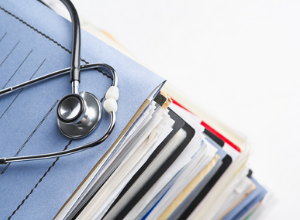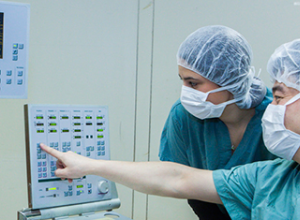Description
This program is aimed at training candidates for the job of “Anaesthesia Technician”, in the “Health Care Sector Skill Council” Sector/Industry and aims at building the following key competencies amongst the learner:
| 1. Provide support to anaesthesia providers in the acquisition, preparation and application of the equipment and supplies required for the administration of anaesthesia. | 2. Assist licensed anaesthesia provider in different care settings. |
| 3. Ability of preparing and managing anaesthesia room. | 4. Ability to prepare for anaesthesia injection and maintenance of equipment. |
This course encompasses 10 out of 10 National Occupational Standards (NOS) of “HSS/Q2501 – Anaesthesia Technician” Qualification Pack issued by “Health Care Sector Skill Council”.
| S.
No |
Topic/Module | Duration (in Hours) | Key Learning Outcomes | Corresponding NOS Code |
| 1.1 | Anaesthesia Assistance | 60 Hrs | · Assist licensed anaesthesia provider in different care settings
· Prepare and manage anaesthesia room · Maintenance of Equipment · Administrative and other duties |
HSS / N 2501 HSS / N 2502 HSS / N 2503 HSS / N 2504 |
| 1.2 | Professional Culture, Protocols, Code of Conduct and Waste disposal standards | 40 Hrs | · Act within the limits of one’s competence and authority
· Maintain a safe, healthy and secure environment · Practice Code of conduct while performing duties · Follow biomedical waste disposal products |
HSS/ N 9603
HSS/ N 9606 HSS/ N 9607 HSS/ N 9609 |
| · Follow infection control policies and procedures
· Monitor and assure quality |
HSS/ N 9610
HSS/ N 9611 |
|||
| 2.0 | Communicative English and Official Communication (Written and Oral) | 20 Hrs | · Candidate should able to Communicate in English.
· Candidate should able to read and write so that he/she should able to understand the prescription. |
Additional as Required for the Job Role |
| 3.0 | Computer Fundamentals | 20 Hrs | · Candidate should able to use computer for maintaining records for statistical database
· Candidate should able to use computer for maintaining records for medical store. |
Additional as Required for the Job Role |
| 4.1 | Anatomy | 20 Hrs | · Development of face
· Bronchial arches · Muscles of facial expression · Muscles of mastication · TMJ · Salivary gland · Tongue · Hard and soft palate · Infratemporal fossa · Para nasal air sinuses · Pharynx and larynx · Cranial and spinal nerves-with emphasis on trigeminal, facial, glossophayngeal and hypoglossal nerve · Osteology of maxilla and mandible · Blood supply, venous and lymphatic drainage of head and neck · Lymph nodes of head and neck · Structure and relations of alveolar process and edentulous mouth · Genetics – fundamentals |
Additional as Required for the Job Role |
| 4.2 | Physiology and Biochemistry | 15 Hrs | · Cell
· Mastication and deglutition · Food and nutrition · Metabolism of carbohydrates, proteins and fats |
Additional as Required for the Job Role |
| · Vitamins and minerals
· Fluid and electrolyte balance · Pain pathway and mechanism – types, properties · Blood composition and functions, clotting mechanism and erythropoiesis, blood groups and transfusions, pulse and blood pressure, · Dynamics of blood flow · Cardiovascular homeostasis – heart sounds · Respiratory system: Normal physiology and variations in heath and diseases, Asphyxia and artificial respiration · Endocrinology: thyroid, parathyroid ad enals, pituitary, sex hormones and pregnancy, Endocrine regulation of blood sugar. |
||||
| 4.3 | Pharmacology | 15 Hrs | · Definition scope and relations to other branches of medicine, mode of action, bioassay, standardization, pharmacodyanamics, pharmacokinetics.
· Chemotherapy of bacterial infections and viral infections –sulphonamides and antibiotics · Local anesthesia · Analgesics and anti – inflammatory drugs · Hypnotics, tranquilizers and antipyretics · Important, hormones – ACTH, cortisone, insulin and oral ant diabetics. · Drug addiction and tolerance · Important pharmacological agents in connection with autonomic nervous system – adrenaline, noradrenalin atropine · Brief mention of antihypertensive drugs · Emergency drugs in dental practice · Vitamins and haemopoietic drugs |
Additional as Required for the Job Role |
| 4.4 | Microbiology | 10 Hrs | · Infection, sterilization – disinfection
· Methods of transmission of diseases · Immunity – types · Bacteria – Common bacteria · Viruses – small pox virus, chicken pox virus, measles, polio, aids viruses |
Additional as Required for the Job Role |
| 5.1 | Anaesthesia for Specialties – I | 25 Hrs | Cardiac Anaesthesia
· NYHA classification, Arrhythmias, Angina, Dyspnoea, Premedication, Setting up of monitoring system, Monitoring – invasive and non-invasive · Getting ready for the case, Induction of cardiac patient, precautions to be taken, transferring the patient to ICU, Care to be taken, ICU management. Neuro Anaesthesia · Glasgow coma scale, Signs of raised ICT, Premedication, Check list, Induction of a patient Positioning in neuro surgery, I.C.P. monitoring, Air embolism, Transferring to I.C.U.Ward Anaesthesia for Trauma & Shock · Resusciation, Preopinvestigation/assessment, Circulatory management, Management of anaesthesia, Rapid sequence induction, Other problems · CPR |
Additional as Required for the Job Role |
| 5.2 | Anaesthesia for Specialties – II | 25 Hrs | Obstetric Anaesthesia
· Differences between a pregnant and a normal lady, Risks for anaesthesia, Precautions to be taken check list, regional vs general anaesthesia, Induction / maintenance. · Resuscitation of the new born, APGAR score, Reversal and extubation, Emergencies – Manual removal of placenta, A.P.H,-P.P.H., Ruptured uterus, Ectopic pregnancy, Labour, Epidural analgesia Paediatric Anaesthesia · Theatre setting, Check list, Premedication, Induction, Intubations-securing the ETT, Monitoring, Reversal & extubation – problems, Transferring / IC management, Pain management. Day Care Anaesthesia · Special features, Set up, Advantages, Disadvantages, Complications, Future Anaesthesia outside the O.R. · Situations, Cath lab, radiology and imaging Science Technology natural calamities, E.C.T., Features, Shortcomings, Complications |
|
| 6.1 | Principles and Equipments related to Anaesthesia Technology | 45 Hrs | Medical Gas Supply
· Compressed gas cylinders, Colour coding, Cylinder valves, pin index, Gas piping system, Alarms & safety devices. Face Masks & Airways Laryngoscopes · Endotracheal tubes – Types, sizes, (RAE Tube, Flexo metallic). Complications – Use |
| care and maintenance of anaesthesia equipment
· Laryngoscopes in Anaesthesia Machine Breathing System · Anaesthesia Machine: Hanger and yoke system, Cylinder pressure gauge, Pressure regulator, Flow meter assembly, Vapourizers-types, hazards, maintenance, filling & draining, etc. · Breathing System: a. General considerations: humidity & heat b. Common components – connectors, adaptors, reservoir bags, Capnography; Pulse oximetry, Methods of humidification, Classification of breathing system, Mapleson system – a b c d e f, Jackson Reesystem, Bain circuit, Non rebreatihing valves – ambu valves, The circle system, Components, Soda lime, indicators |
||||
| 6.2 | Health Education | 5 Hrs | · Aims & Principles of Health education
· Methods of Health Education · Effects of health education · Levels & practice of health education · Need of Health education to attain positive health |
Additional as Required for the Job Role |
On Job Training: 150 Hours
Total Programme Duration: 450 Hours (300 Hrs Theory & 150 Hrs OJT)
(This syllabus/ curriculum have been approved by Health Care Sector Skill Council (name of relevant Sector Skill Council or NSDC designated authority).







Reviews
There are no reviews yet.